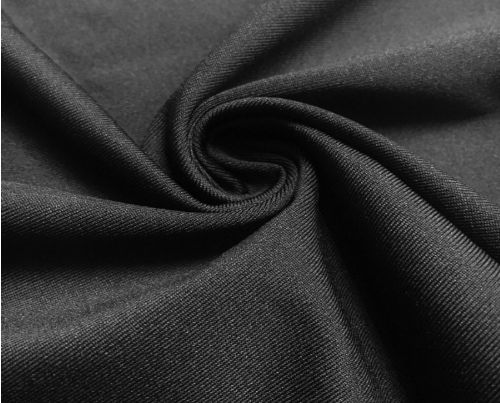Polyester is a category of polymers that contain the ester functional group in every repeat unit of their main chain. As a specific material, it most commonly refers to a type called polyethylene terephthalate (PET). Polyesters include naturally occurring chemicals, such as in plants and insects, as well as synthetics such as polybutyrate. Natural polyesters and a few synthetic ones are biodegradable, but most synthetic polyesters are not. Synthetic polyesters are used extensively in clothing.
Polyester fibers are sometimes spun together with natural fibers to produce a cloth with blended properties. Cotton-polyester blends can be strong, wrinkle- and tear-resistant, and reduce shrinking. Synthetic fibers using polyester have high water, wind and environmental resistance compared to plant-derived fibers. They are less fire-resistant and can melt when ignited.
Liquid crystalline polyesters are among the first industrially used liquid crystal polymers. They are used for their mechanical properties and heat-resistance. These traits are also important in their application as an abradable seal in jet engines.
Polyesters occurring in nature include the cutin component of plant cuticles, which consists of omega hydroxy acids and their derivatives, interlinked via ester bonds, forming polyester polymers of indeterminate size. Polyesters are also produced by bees in the genus Colletes, which secrete a cellophane-like polyester lining for their underground brood cells earning them the nickname “polyester bees”.
Depending on the chemical structure, polyester can be a thermoplastic or thermoset. There are also polyester resins cured by hardeners; however, the most common polyesters are thermoplastics.[11] The OH group is reacted with an Isocyanate functional compound in a 2 component system producing coatings which may optionally be pigmented. Polyesters as thermoplastics may change shape after the application of heat. While combustible at high temperatures, polyesters tend to shrink away from flames and self-extinguish upon ignition. Polyester fibers have high tenacity and E-modulus as well as low water absorption and minimal shrinkage in comparison with other industrial fibers.
Increasing the aromatic parts of polyesters increases their glass transition temperature, melting temperature, thermal stability, chemical stability, and solvent resistance.
Polyesters can also be telechelic oligomers like the polycaprolactone diol (PCL) and the polyethylene adipate diol (PEA). They are then used as prepolymers.
Post time: Dec-06-2022




